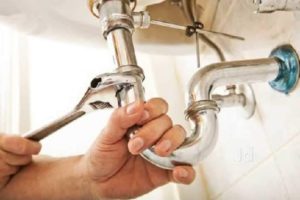If you’re tired of paying an air conditioning company to fix your ductwork, you should know that you can fix and repair your air ducts and cooling units yourself.
In this article, we’ll look at identifying a clogged air duct, repairing a leaking duct, and how to properly insulate ductwork. We’ll also discuss the types of air ducts and the steps to take when troubleshooting these systems.
Symptoms of a clogged air duct
If your home or building is experiencing problems with temperature control or forced air from your air vents, it might be time to check your pipework for possible blockages.
Your pipework can become clogged for several reasons, from damaged pipework to overly-sized systems. The most common symptoms of a clogged air pipe include uneven heating and cooling and an increase in energy bills.
If you’ve noticed a musty odor in the air pipes of your home, this could indicate a clogged pipe. Warm air that’s been sitting in the pipes for years can lead to the growth of mold and mildew, which can negatively affect your health. Click here for more information. In addition to being an unpleasant odor, prolonged exposure to mold and mildew is also hazardous to your health.
Some of these clogs are small enough to remove on your own, but some can be quite large and lodged too deep inside the pipe. A professional HVAC technician will have the right equipment to clean the pipes and make sure they don’t cause any damage. They may also need to remove the clog by cutting off a section of the pipe and patching the hole.
Cost of a repair service
Air pipes are an integral part of any HVAC system. They are often designed to last more than a decade, so the last thing you want is to have to spend more money on repairing them than necessary. Pipes can become damaged or unclean, which will greatly hinder the performance of your cooling and heating units and waste money year after year. You can get your air pipes repaired by a professional to bring your unit back to life.
The average cost to repair a central air conditioning unit is between $100 and $500. Common repair work includes replacing a thermostat and fixing a refrigerant leak. As a homeowner, it’s a good idea to schedule maintenance to reduce the need for major repairs. Schedule annual visits with your HVAC professional to replace filters and clean the pipework. Depending on the size of your home, a central air conditioning replacement may cost up to $12,000 or more.
Identifying a leaking pipework
A visual leakage test is the first step in identifying a leak in the piped system of your home. Check for any torn pieces or wet spots, and if you see any of these, call a professional like the ones at https://burkshvac.com/ serving Chicago Illinois to fix the problem. If you are not comfortable doing this, you can purchase a chemical sealant and reattach the pipes.
Using a flashlight, you can visually check for holes, tears, and other issues. If you notice any of these issues, mark them with grease pencils to help your HVAC technician identify the problem. If you are unsure of the exact location of a leak, try turning your air conditioning system on its highest setting. This will push the conditioned air throughout your home, so you’ll be able to see where the problem is.
After you’ve located the leak, you should call a professional HVAC technician to inspect the faulty areas. Your HVAC system may be leaking air through a hole in a pipe. While visual inspections are helpful, they cannot give you the full picture of a leaking pipe network. A professional is better equipped to identify and repair leaks in pipework so that your HVAC system will work as efficiently as possible.
Insulating pipes
Before you start insulating a pipe, you should make sure that you have repaired any leaks. These leaks often occur around the connecting joints, and if you’re not careful, they could lead to an open leak. Aim for a 4% leakage rate and go for a higher R value insulation. Insulating pipes should be at least 6 inches thick.
First, locate the damaged insulation by using a probe. The damaged pipe insulation can be either flex pipe, metal or plastic, or a combination of both. If it’s a metal flex pipe, repair it with a small piece of foil tape. After the foil tape is in place, you can apply pipe mastic to the joint. Once the mastic has dried, you can continue the process of insulating the pipe.
Insulating pipes is a simple yet effective way to improve the efficiency of air-conditioning systems. By sealing leaks, pollutants are reduced that circulate throughout the home. Leaking pipes can allow household chemicals, insulation particles, and dust to penetrate. All of these particles can be dangerous for a person’s health, and improperly insulated ductwork will have a detrimental effect on your home’s air quality.
Mold growth in ducts
If you suspect that your air ducts or cooling units are suffering from mold growth, you need to find out how to identify it. While visible mold is the most obvious sign of an infestation, you should also be aware of the symptoms of moldy ducts and cooling units. The symptoms of moldy ducts include: a musty smell, a stale odor, and a foul odor when the heating or air conditioning unit is turned on.
The most common causes of mold growth in air ducts and cooling units are warm and humid environments. If the AC temperature is too high, water droplets will form in the ducts. This moisture will feed on the dust, dirt, pollen, and dander in the air. In addition to these causes, improper ventilation can make air in the ducts even more humid. Regardless of the cause, mold growth in air ducts and cooling units is a serious problem.
Fortunately, there are several DIY solutions for cleaning a moldy air duct. While household cleaning can remove some of the mold, the invisible spores will continue to float through the air and settle on surfaces.



